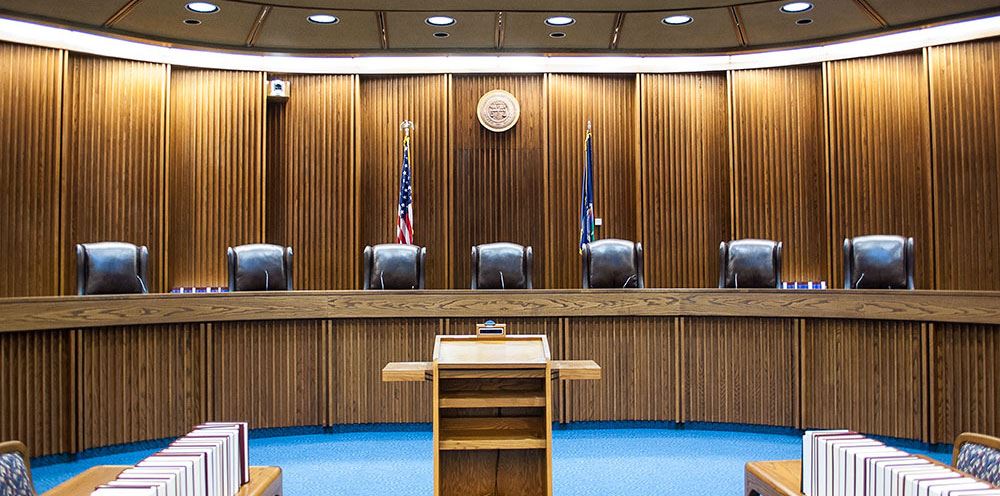To increase the number of interesting cases available here, I have decided to start using a few case summaries written by trusted authors outside of Kansas. I intend to continue writing on Kansas cases as time permits, but hopefully these additions will be worth your time too.
The following summary is from 5 Informer 25 (authored by the Legal Division staff of DHS at the Federal Law Enforcement Training Center)
A United States Supreme Court case handed down May 15, 2025:
Barnes v. Felix, No. 23-1239 (605 U.S. ____ (2025))
Officer Roberto Felix, Jr. conducted a traffic stop on Ashtian Barnes after hearing a dispatch from Harris County Toll Road Authority relaying the license plate number of Barnes’ vehicle as one with outstanding toll violations, and Felix subsequently saw the vehicle and matching plates on the Tollway. After Felix engaged his emergency lights, Barnes pulled off the road into the median on the left-hand side of the Tollway. After parking his patrol vehicle behind Barnes’ Toyota Corolla, Felix walked to the driver’s side window and requested Barnes’ driver’s license and proof of insurance.
Barnes claimed that he did not have the requested documentation and informed Felix that the Toyota had been rented a week earlier in his girlfriend’s name. During the discussion, Officer Felix saw Barnes moving in the vehicle and told him to stop “digging around.” Felix also stated that he smelled marijuana and inquired if there was anything in the vehicle Felix needed to know about. Barnes stated that the documentation that Barnes requested “might” be in the trunk of the vehicle.
At this time, Felix ordered Barnes to open the trunk. While this was taking place, the left turn signal continued to flash. As the trunk to Barnes’ Toyota opened, the left turn signal stopped flashing. Felix then ordered Barnes to step out of the vehicle, and the door could be seen beginning to open. At that point, the left turn signal began to flash again. As the signal began to flash again, Officer Felix ordered Barnes to stop moving and pointed his pistol at him. The Toyota moved forward and Officer Felix stepped onto the door sill. While the automobile continued driving forward with Officer Felix hanging on, Felix fired at least twice into the vehicle at Barnes. After a short distance, the Toyota came to a stop. Barnes was pronounced dead at the scene approximately eight minutes later.
On appeal to the Fifth Circuit, the court reviewed whether Felix “was in danger at the moment of the threat that caused him to use deadly force against Barnes.” Since Felix was hanging on to the side of an accelerating vehicle at the moment he fired his weapon, the Fifth Circuit determined that he did not violate Barnes’ Fourth Amendment rights and, therefore, affirmed the district court’s finding of summary judgment for Felix.
However, in a concurring opinion, the Fifth Circuit stated that the moment-of-threat doctrine overly limited their ability to determine whether an officer’s use of force was reasonable. Citing Scott v. Harris, which states that a Fourth Amendment analysis is a “factbound morass of reasonableness” by necessity, the Fifth Circuit claimed that they are deprived of potentially relevant facts at the expense of human life.
In the case of Barnes, the facts that the initial crime was driving with an outstanding toll fee, that Felix jumped into the door sill of the moving vehicle, and that Felix fired within two seconds are a collection of facts that “merits finding that Officer Felix violated Barnes’ Fourth Amendment right to be free of excessive force.” Based, in part, on this concurring opinion, Barnes’ estate appealed this decision to the U.S. Supreme Court. A Writ of Certiorari was granted in this case and oral arguments were heard on January 22, 2025. Specifically, the question before the Court was whether the framework of objective reasonableness under Graham v. Connor and its analysis of the “totality of the circumstances” allows courts the ability to limit their review solely to the moment of the threat when evaluating a use of force case.
Published on May 15, 2025, the Court held that the moment-of-threat doctrine applied by the Fifth Circuit is an “improperly narrowing” approach to reviewing the lawfulness of an officer’s use of force. To properly review such claims, a court must assess any and all of those relevant facts, including those events and circumstances that led up to the final moment, instead of merely focusing on the officer’s perceptions of the threat at the precise moment that force was applied.
According to the Court, the constitutionality of an officer’s use of force is evaluated under the Fourth Amendment. Under Graham, this seizure is analyzed “from the perspective of a reasonable officer on scene” at the moment force is applied. The analysis also takes into consideration the balance of the individual’s Fourth Amendment interests against those governmental interests present in the totality of circumstances. Of interest, the Court highlighted that the review of the totality of the circumstances does not have any sort of time restraints, and that those facts “cannot be hermetically sealed off from the context in which they arose.”
The Court recognized that a suspect’s conduct is “always relevant,” as it points to both the type and degree of threat a suspect represents. However, the Court identified a number of other categories of facts that are not as time sensitive, but still relevant to the totality of the circumstances. Officers’ attempts to control the encounter or otherwise give warnings may be relevant. The severity of the crime can also be given weight by the reviewing court. The Court acknowledged that “historical facts” will typically carry less relevance than those facts that are derived “in-the-moment,” but stated that there is no legal ruling that forbids a court from considering those historical facts. The Court further acknowledged that the totality of circumstances cannot be viewed with such “chronological blinders” in place.
A secondary question, however, was left unaddressed. The Court stated that the lower courts never addressed whether, or how, a dangerous situation created by the officer’s own actions would be considered within the framework of objective reasonableness. This question was not before the Court and, therefore, was not taken up by the Court.
In a concurring opinion authored by Justice Kavanaugh, he mentioned some of the legal considerations that make up the totality of the circumstances regarding traffic stops and pursuits. Primarily, Kavanaugh’s opinion focused on highlighting that the underlying traffic violation might suggest a lesser threat. However, flight and the suspect’s reasons for flight may often suggest a much higher type of threat than the traffic violation itself. Therefore, any evaluation of the totality of the circumstances for a use of force related event is incomplete if it does not take into account what actions the suspect made in their attempts to flee.
For the court’s opinion: https://supreme.justia.com/cases/federal/us/605/23-1239/case.pdf
~Colin


